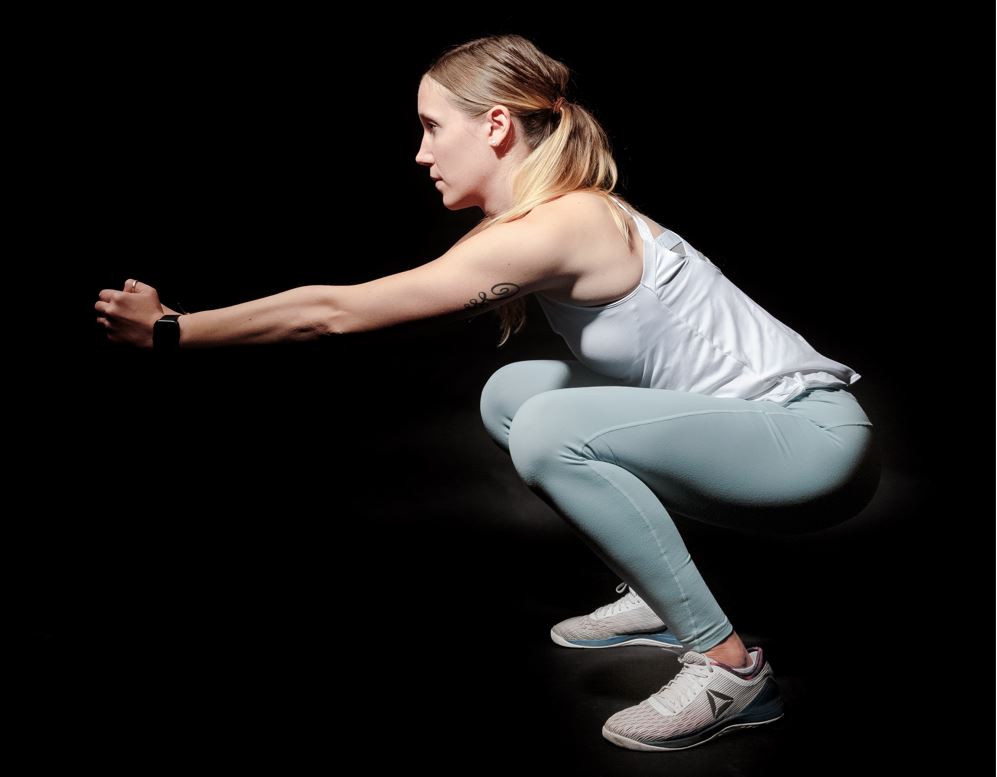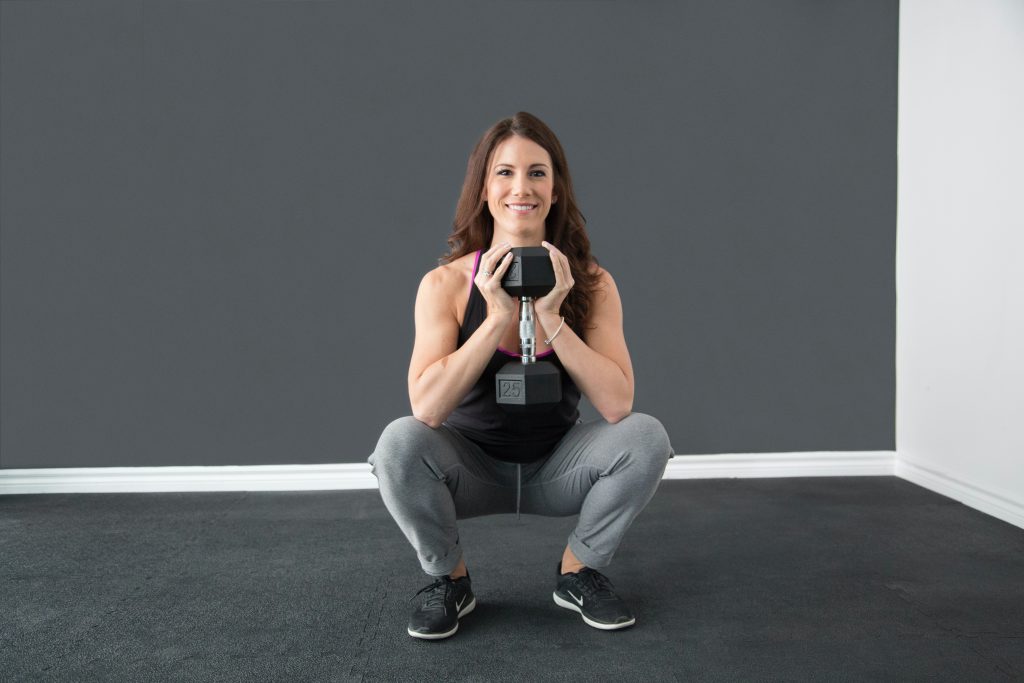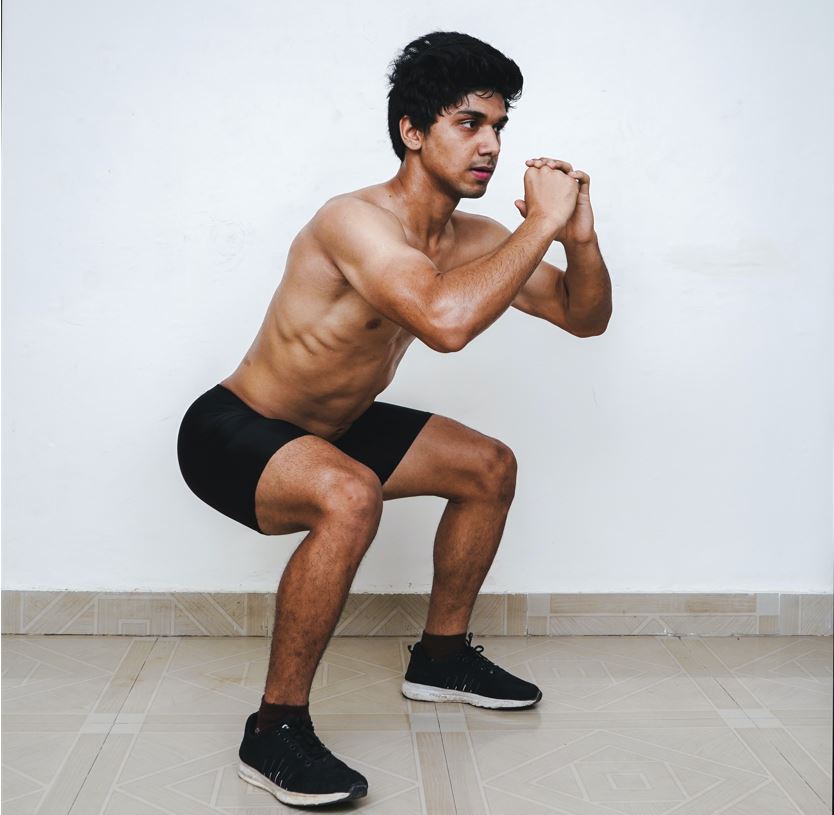
Squats.
For some people, that’s almost a dirty word.
When it comes to squats, people can be really passionate about them – they either really love them, or they despise them.
Perhaps we’re gluttons for punishment, but we love squats. How could we not, when they are just so good for you in so many ways?
If you’re not a fan of squats, we’re going to make it our mission to change your mind.
And if you aren’t exactly a fan, but you get them done, we’re going to give you all the info you need on squats including what they are, why they are good for you, some of the unexpected benefits that come from doing them and how to actually do them properly.
So, let’s get right into it!
What are squats?
Unless you’ve been living under a rock, chances are you have an idea of what a squat is. If you have been living under a rock, then you probably actually had to do a squat to get down there.
But in the simplest terms, a squat is a type of strength exercise where you lower your hips from a standing position to a bending, almost seated like, position. The move involves hinging your hips and bending your knees and wakes up a whole heap of muscles in the process (more on that later).
There are many different variations of squats, but the most straightforward, common kind is the kind that looks as if you’re about to sit down into a chair.
So, why do gym goers and fitness experts love squats?
Why are squats so good for you?
The squat is a strengthening-training exercise that is known as a compound movement exercise. What this means is that it works multiple muscle groups and multiple joints. While some muscles see a little more action in squats – hello, quads and glutes – than others, there are a lot of muscles that get in on the fun when it comes to squatting.
Some of the muscles that are worked and areas of the body that are engaged during squats include:
- Quadriceps
- Glutes
- Hamstring
- Hips
- Knees
- Ankles
- Core
As you can see, a relatively simple move can have a great impact if it’s engaging this many areas of the body.
Primarily, squats are seen as helping to build strength in the lower body. This is highly important as a strong lower body can help keep us moving, powering our stride, improving our endurance, and helping us to prevent injuries.
And while they help to keep the lower body strong, they can also improve your mobility, balance, overall strength, coordination, and posture, making them a functional exercise which in turn help to make everyday actions and movements even easier to manage.
So, obviously all of this sounds good, but what does this translate to? Let us tell you.

Benefits of squatting that you may not realise
There are so many good things that can come from these much-dreaded exercises including, but not limited to:
1. Squats aid in building up muscle
As a strength and resistance training exercise, the squat is of course great for building up those leg muscles and the butt, helping to tone and strengthen them. But because they manage to work so many different muscles at the same time, it promotes muscle building all over almost your entire body, like in the abs, and lower back.
2. They are a calorie crushing exercise
While cardio exercises like running tend to get a lot of glory for being great for burning calories, when it comes to compound exercises that work multiple muscle groups in one go, like squats, they too are absolutely great at burning calories.
This is also due to the fact that squats are muscle building exercises, and building muscle helps you become more efficient at burning those calories.
3. Strengthens your core
Squats help to engage the core muscles, with some variations of the squat engaging them more than others. If you know anything about the body, you might know that the core is, as the name suggests, almost like the epicentre and plays an important role in you being able to comfortable perform all sorts of everyday movements, like bending, turning and even just standing. While you might find some exercises that specifically target the core a little off putting or tiring, you can get the benefits of building your core without even realising that you’re doing it with squats. You can learn more about core strength and why it’s important here.
4. Posture improvements
Squats help to improve your leg strength, bum strength, and your core strength which is going to benefit you by improving your posture. Squats activate the same core muscles that play a huge role in your ability to stand up, meaning that the stronger they are the better you’re going to be at standing and sitting up with a great posture.
5. Boosts your athletic and sporting performance
The improved strength in your legs and glutes can help to improve your sporting prowess. Stronger leg muscles can lead to better execution of movements, greater speeds of movement, and if you play sports that involve jumping or fast movements where you need to push off, the practice of your squatting will come in handy.
6. You don’t need anything to do them
Squats are one of those great exercises that you don’t need anything else to perform them. Of course, as you get better at them and are looking for variety and more of a challenge, you can add weights to your exercise. However, there are also many different kinds of squats and depth in which you can that even challenging yourself doesn’t require the addition of equipment. All you need is you.
7. There are ways to always progress
While we’re on the topic of progression in the benefit above, we thought we would put this as its own benefit. Squats really are the gift that keep on giving. There are just so many different kinds of squats and ways to add to them to change them up and to develop further strength. Whether it’s the addition of weights, a change in your standing position, or how deep you go – there’s always something.
8. Squats help you maintain and improve your flexibility
As we age, our body starts to lose elasticity. This happens to our muscles, joints, tendons, and ligaments. It can make it more uncomfortable to move and make getting things done a little tougher. However, regular exercises that make use of our joints and keep our muscles, tendons, ligaments, and joints active and working makes them more limber and flexible, making life a little easier for you.
9. Strengthen your lungs and heart
While squats aren’t your typical cardiovascular style exercise, they still require good, proper breathing techniques, and effort to do. This is especially true as you add more weight to your routine.
10. Maintain and improve your joints
Squats work your hip, knees, and ankle joints, which are all susceptible to injuries and joint issues. Moving them regularly can help to keep them in great working condition and building up the muscle in your legs can also improve your joint strength and stability as well. This means that everyday movements will be less painful as you age, and your body is more likely to execute daily movements properly, not taking shortcuts, which can lead to joint issues.
11. Helps to keep your bones strong
Bone health is extremely important, especially as we age. Building the muscle in your body can help you prevent injuries to bones, and strength training can also help to boost bone density. Squats alone won’t necessarily improve your bone density, but they are a great place to start!
12. Make your everyday life easier
The improvement in flexibility, joint function, bone strength and your posture, all help improve your coordination, mobility, and balance, which can just make everyday living so much easier. Sitting down and getting up from a seated position, even when you’re in a sunken chair will be significantly easier. As will reaching for items on higher shelves, bending over to pick things up, as well as your endurance to be able to get things done throughout the day!
13. Reduces your risk of injury
Stronger muscles means that your body is better supported in all sorts of movements, including full body movements. With improved balance, form, mobility, and posture, that squats can help you achieve, your ability to perform these movements, whether it’s in a sporting capacity or just living your life, is less compromised. Meaning you’re less likely to be injured along the way.

How to do squats properly
Now, we’re going to lie to you and say that squats are a walk in the park. If you’ve never done them, you don’t exercise regularly, or if you do exercise, but do not perform many compound exercises that use these muscles, chances are, you’re going to feel it the next day.
However, while you might be a little sore or find them tiring to begin with, they are an exercise that over time, you will find easier.
When it comes to performing a squat, it’s not about how deep you can go or how many you can do. It’s about the quality of your form.
We’ve mentioned how there are many variations on the squat, but before you head out with your weighted barbells in your widest stance, it’s so important you know how to do the most straightforward, normal, bodyweight squat.
Follow these steps to get the right squat form.
Step 1: Stand up straight. Your feet should be around shoulder-width apart, slightly wider if that is what is comfortable for you. Your feet should be pointed slightly outward, not straight ahead. There’s no exact position, but anywhere between 5 to 30 degrees.
Step 2: Still standing up straight you want to make sure that your posture is good. You don’t want your back to bend or curve in this movement, the bend comes from your hip. So, you need to make sure you’re in the right position to prevent that from occurring. Roll your shoulders back and down.
Step 3: Lift your arms so they are straight out in front of you, parallel to the ground – almost as if you’re putting your hands on the shoulders of the person in front of you.
Step 4: You want to make sure your weight is on both the balls and heels of your feet. Your feet should feet planted to the ground and not lift during the movement.
Step 5: Your hips are the initiator of the movement, not your knees. So, you want to start the hinge movement, where you unlock your hips by bringing them back, and as your hips are moving back and hinging, your knees will bend. It’s important to remember to breath, so as you’re hinging your hips, this is your sign to inhale as well.
Step 6: Keep your back straight and your chest broad. Your shoulders should stay upright and your back straight. You will lean forward somewhat during the move, and this is ok, as long as your back isn’t curving or arching as well.
Step 7: Hinge your hips back and bend your knees until your thighs are parallel to the ground. This is a starting point when it comes to squatting. While over time you might aim to go deeper, for now, we just want to make sure you’ve got the technique right. You should feel as if you’re about to sit down into a chair.
Step 8: Once your thighs are parallel to the ground, pause for a moment, then push through your heel and exhale as you return your body to the starting position. You want to pause before you make your way back up as you want to engage the right muscles and not just use momentum to get yourself back up.
Note: If you’re new to squats, you may have to work at keeping your knees in line with your feet. You don’t want your knees turning inwards throughout the movement as this can cause pain. ‘
Beginner’s Tip: If you’re recovering from an injury, new to exercises, or new to lower body exercises, a great place to start is to use a chair. Place a chair behind you, as if you’re going to sit on it, and perform the move, and when you feel your butt hit the chair, that’s the sign for you to make your way back up. This will usually mean that your squat won’t be as low as it will be eventually, however, it’ also has the added benefit of giving you somewhere to sit if you lose control of your squat or need a break.
Get your squat on at Rec Xpress
Here at Rec Xpress, you can probably guess that we love a squat or two, and if you’re looking for a friendly environment that you can smash out some squats in, maybe with weights or machines, then why not come see us at one of our 6 South-East Melbourne locations. We’re open 24/7, we have modern equipment, friendly and helpful staff and you don’t have to lock into a contract if you don’t want to!
